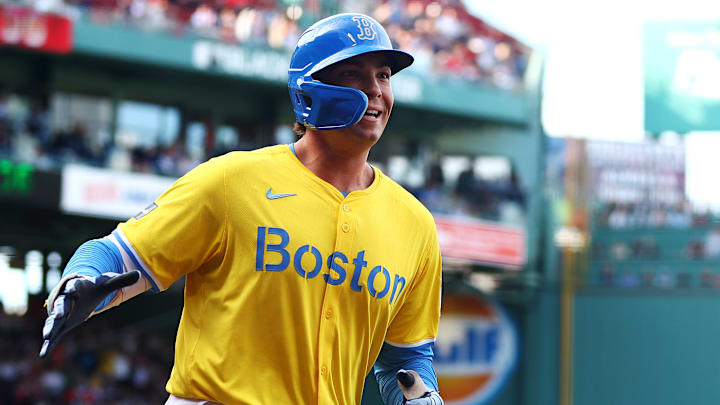The Boston Red Sox have been active participants in the rumor mill, and one persistent rumor percolates around third base. Two noteworthy players have been prominently mentioned, with free agent Alex Bregman as one possible target, and a rather expensive one.
The next third baseman whose name has surfaced is Nolan Arenado of the Cardinals, whose contract has the Cards willing to listen to trade offers. Both are superb defensive players and accomplished batsmen, and both would represent a defense upgrade at third base. But Boston has a third baseman.
Rafael Devers's third base skills are lacking, and in 2024, Devers was dead last in MLB defensively at third among qualified players. Bregman is a reigning Gold Glove winner, and Arenado has ten. Both Arenado and Bregman are right-handed bats compared to the lefty Devers, and Boston does need some punch from that side. Now what?
Boston has experience shifting a player from third to first, with Keven Youkilis being the most noteworthy in recent memory. The smart move, since Devers is being paid into the next decade, is to shift Devers to first base, which creates another problem regarding the current occupant, Triston Casas. That circles back to the rumor mill and a potential Casas trade.
Social media is abuzz with speculation that Casas could be shuffled elsewhere. He has survived early career disappointment and injury history, and a certain quirkiness has endeared him to a large segment of Red Sox nation. Mammoth home runs certainly help, but Casas would not be the first talented first baseman to get traded.
Trading Triston Casas could bring that final necessary starter to the Red Sox
In June 1967, Boston needed pitching and shipped 22-year-old righty Tony Horton to Cleveland. Horton was a looming presence on the field, but Boston had George Scott, who had a superior bat and glove. Scott would soon discover what goes around. In 1971, Scott's Gold Glove and 24 home runs were shipped to Milwaukee in a massive trade. Who plays first?
The Red Sox had a magnificent solution, and the answer was in New York. Boston had an affinity for right-hand hitting Danny Cater, who had played for four teams before joining the Yankees. Much like a later fascination with Julio Lugo, the Red Sox traded Sparky Lyle to the Yankees in late March to fix first base. Lyle won the Cy Young Award, and Cater lasted three forgettable seasons in Boston. Meanwhile, a young Cecil Cooper sat and waited.
Cooper, a stringy lefty hitter with a smooth swing, hit .311 for the 1975 team. In 1976, Cooper hit .282 and was rewarded by being traded to the Brewers for (wait for it) Scott. Cooper went on to win multiple Gold Gloves and enjoyed multiple All-Star selections, and had four 100+ RBI seasons and a career .302 average with the Brewers.
Trading Casas would not be a eureka moment in Red Sox history for a talented young player to be shipped out who played first. Boston needs pitching, and Casas is the ideal instrument for it. Third base would again be locked down like Youk and Mike Lowell have done. Devers is in his prime baseball years, and his offense is needed. The smart move is dealing Casas.
